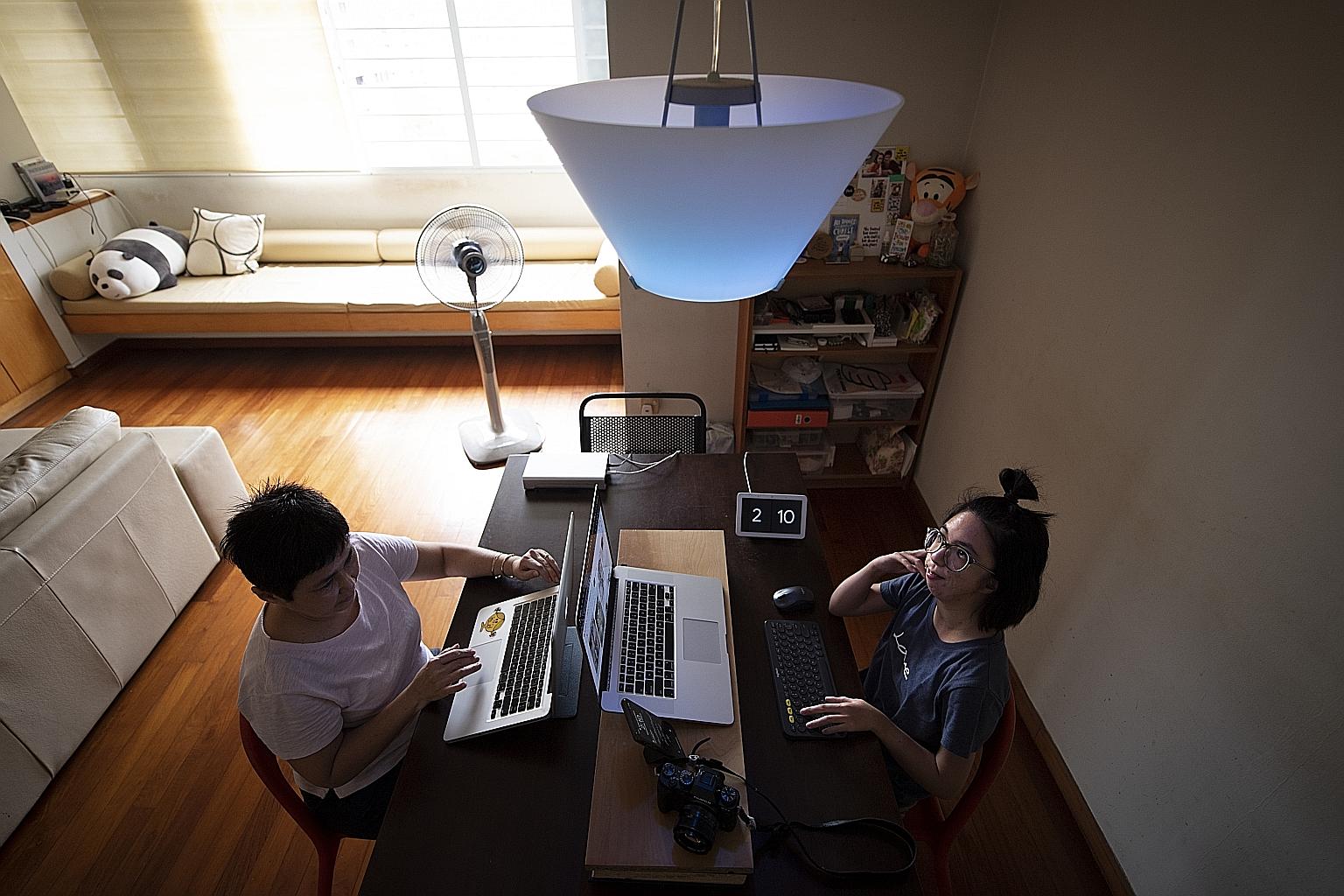New guide on smart home tech for people with disabilities
It shows how tech can allow them greater independence, guides them in setting up a simple smart home ecosystem
Sign up now: Get ST's newsletters delivered to your inbox

Ms Isabelle Lim (right), who is deaf, at home with her mother, Mrs Jacqueline Lim. The light above them is programmed to turn blue when it rains and to flicker when the doorbell rings. Ms Lim was involved in the development of the new Smart Home Guide for people with disabilities.
ST PHOTO: SHINTARO TAY
Follow topic:
Smart home technology has helped 26-year-old Isabelle Lim, who is deaf, to live more independently.
The full-time photographer began using smart home devices last September, and has an app that links her home's smart doorbell and smart lighting system.
"I've programmed the light to flicker when the doorbell rings so that I'm alerted when someone is at the door.
"This is especially useful when a deliveryman comes by with my online purchases and food delivery or when our family and friends come over to our place," said Ms Lim, who has Nager syndrome, a rare genetic disorder characterised by facial and limb deformities.
The light has also been programmed to turn blue when it rains, so that Ms Lim is alerted to close the windows when her mother is not home.
She lives with her parents, grandmother and brother in a Housing Board flat in the eastern part of Singapore.
She also uses Google's virtual assistant Nest Hub and streaming device Chromecast, as well as the Kyla app for its infrared blaster to control appliances that operate using infrared remote controls.
Ms Lim was one of those involved in the development of a new online guide on smart home technology that was launched this month for people with disabilities. It demonstrates ways the technology can help them live, work and play with greater independence.
The Smart Home Guide, developed by SG Enable in partnership with Google, explains the benefits of smart home technology, features selected devices and guides people with disabilities and their caregivers in setting up a simple smart home ecosystem.
Examples of smart home tech include virtual assistants that can listen to verbal or app commands to follow instructions or reply to questions, as well as smart plugs that can be plugged into existing power sockets and controlled remotely via a mobile app or voice command.
Development of the guide started last year. SG Enable partnered Google to install smart home devices in the homes of three people with different disabilities - visual impairment, physical disability and deafness - to understand the benefits and potential challenges of using smart home technology.
The three people chosen were clients of SG Enable and did not have to pay for the devices.
SG Enable assistant chief executive Tan Ko We said: "For many of us, technology brings convenience.
"For persons with disabilities, technology can play an even more crucial role in enabling them to live, work and play more independently."
Mr Tan added that people with disabilities as well as their caregivers can customise their homes with smart devices to suit their unique needs and make their homes more accessible.
Google Singapore country director Ben King said: "Every day, we witness the transformative power of technology to better the way we live and experience the world.
"This is especially evident within the special needs community, as smart home technology can help to provide greater convenience and support their independence."
Mr Tan said: "Feedback on the smart home devices was mostly positive. However, we recognised the need to build greater awareness of smart home technology and its benefits.
"Hence, this guide was developed for persons with disabilities and caregivers who may be new to, or currently unfamiliar with, smart home technology."
There was feedback that installing too many devices at a time could be overwhelming for users.
The guide therefore recommends that people buy and get used to two or three basic devices first before adding more, said Mr Tan.
The devices included in the guide were curated to keep overall costs low, he added.
For people with disabilities from low-income households, the Assistive Technology Fund administered by SG Enable provides subsidies.
The guide can be downloaded from the Enabling Guide website.
People with visual impairment can access the website and the guide with the use of screen readers or other assistive technology.

